‘Alpensee’ and other varieties of Wittrock viols from ‘Swiss giant’ group
Since 1927, the Schweizer Riesen group has been known (Schweizer Riesen, "Swiss giant" or "Swiss giant"), varieties of this Wittrock viola have large flowers with a diameter of 6-7 cm.
The most famous of them:
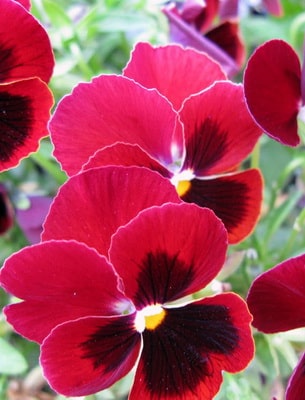
‘Abendglut’ (‘Abendglut’) - with dark red flowers and a dark spot
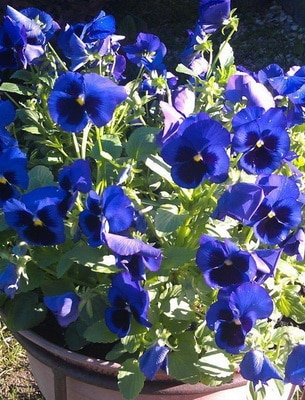
‘Alpensee’ (‘Alpensee’) - a variety of Viola Wittrock with a blue flower and a dark spot on the petals

‘Bergwacht’ (‘Bergwacht’) - violet blue
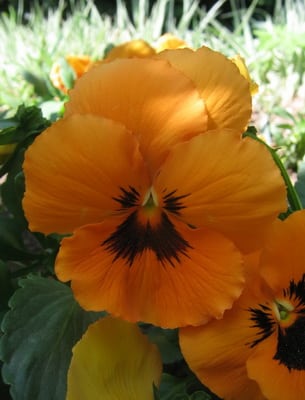
‘Orange Sun’ (‘Orange Sonne’) - orange-apricot with a dark spot
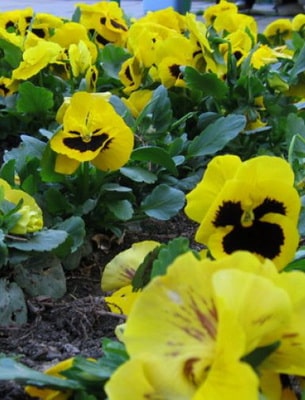
‘Firnengold’ (‘Firnengold’) - golden yellow with a brown spot
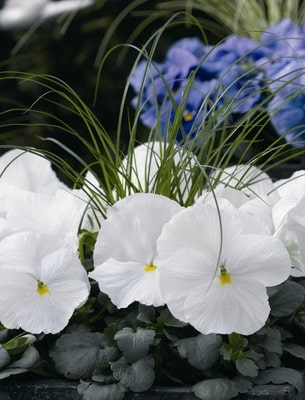
'Firnenschnee' - pure white
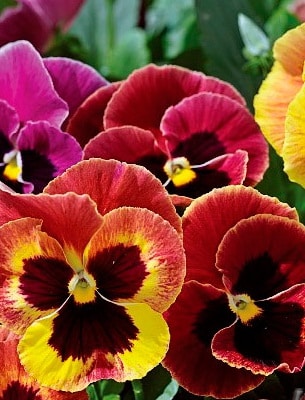
‘Flamme’ (‘Flamme’) - brick red with a dark spot
Many of these varieties can still be found in flower seed shops today.
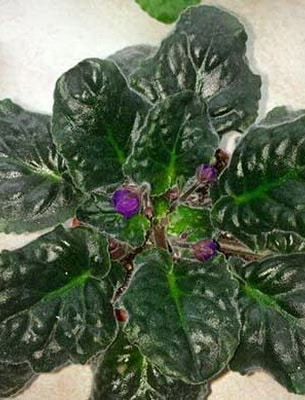
Series Crystal Bowl F1 (Crystal Bowl Series F1) - dwarf plants with small dark green leaves and numerous peduncles; bloom early. Flowers with a diameter of about 6 cm, uniform color, without eyes. The hybrids are heat tolerant, most attractive in groups. Consists of 12 varieties.
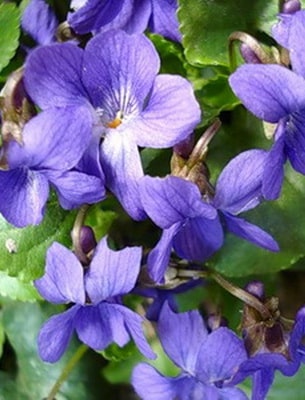
Maxim F1 series (Maxim Series F1) - plants of early and long flowering period, resistant to heat and cold. Flowers with a diameter of 6 cm in various colors with a dark "eye" in the center. Includes 12 varieties.
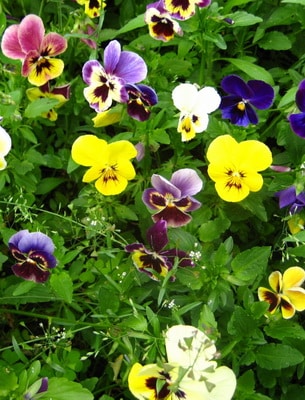
The Joker F2 series (Joker F2) has a very interesting, double and even triple color of the petals. The diameter of the flower is from 6 to 7.5 cm. There are 7 varieties in the series.
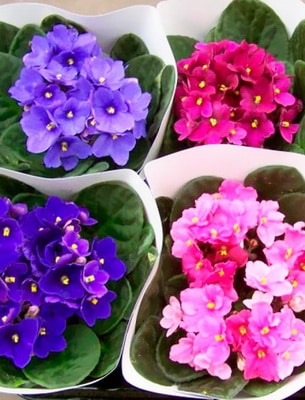
The Weseler Eis series consists of 8 varieties with different flower colors.
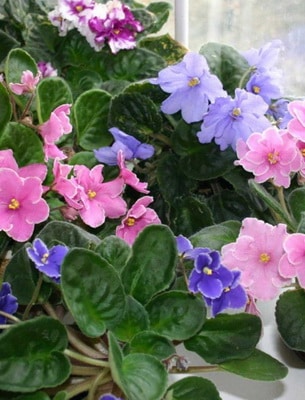
Giant Forerunner is one of the most winter-hardy series, consisting of 15 varieties with different flower colors.

F1 Springtime (F1 Springtime) - a series of compact winter-hardy, long-flowering and early blooming hybrids, consists of 20 varieties with different colors.
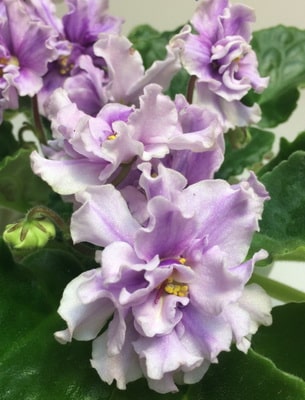
Among the varieties of the series ‘F1 Springtime Cassis’ (F1 Springtime Cassis ’) - with velvety, dark purple flowers, all the petals of which are edged with a thin white border.
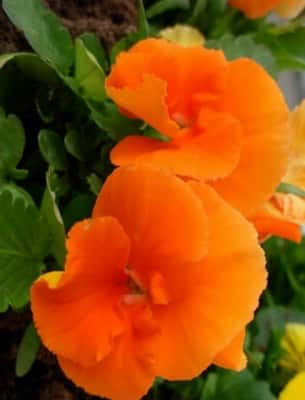
‘Padparadja F2’ (‘Padparadja F2’) - one of the most beautiful bright orange coloration and very long flowering.
In large-flowered viols, the diameter of the flowers is from 7.5 to 8.5 cm.
These photos show different varieties of Wittrock's viols:
Recommendations
Experienced growers who already know how to grow PC-Babylon are willing to share their experience. Calcium nitrate helps to fight the weakness of the peduncles. It must be applied by foliar feeding. If the additive is not excessive, burns can be avoided. The maximum amount consumed is 0.001 kg per 4 liters of clean water. Although calcium nitrate gives a neutral chemical reaction (does not have pronounced acidity), each portion of it is first tested on several plants. But it is better to refuse calcium Brexil altogether.
Before buying planting material for any violets, it is important to find out exactly how a particular variety will behave on a windowsill or in a garden bed. As for many other varieties, the level of illumination is critical for RS-Babylon.
Leaves can be germinated in moss, in light soil. Some even sprout them in clean water. However, according to experienced florists, it is better to use peat tablets. It takes 45-60 days to wait for the babies to appear. It is advisable to propagate plants with a large number of leaves, given that some can rot.
Every year (or every six months), the violet should be transplanted into fresh soil. If the plants are poorly developed and do not give flowers, you should not rush with treatment and fertilization. Improving growing conditions sometimes helps. Perhaps, in your case, an increase in illumination will be enough.
You can find out why violets do not bloom by watching the video below.
Description of the variety
First of all, it must be said that by its nature "Luntik" is a saintpolia, which has nothing to do with violets. However, "violet" is a more common name for a flower, so this word is most often used. The main biological difference between Saintpaulia and violets is the need for care. It is believed that the violet is absolutely picky, while the Saintpaulia needs more careful and attentive treatment. But Luntik is easy to look after.
To make sure that the Luntik violet is the right choice for your home mini-garden, you need to study the botanical characteristics of the variety. The flower was bred by the breeder Elena Anatolyevna Lebetskaya. The color of this plant is dark blue with a purple tint. It was in connection with the rich color that the violet got its name: after all, the cartoon character Luntik is painted in just such a tone.
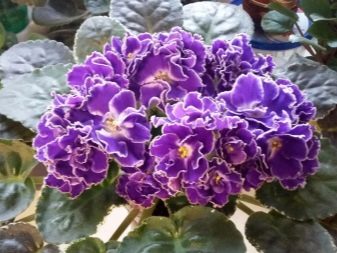
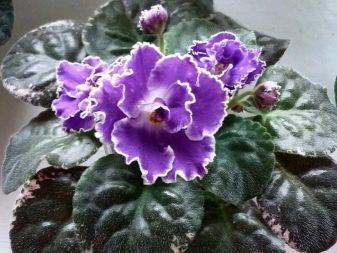
It is important to note that this variety is not uniform in color. It is considered fantasy
This is the name of violets with specks of different shapes and strokes of a different color on the petals. "Le-Luntik" has a white eye, and on the surface of its flowers there may be small blotches of pink. However, they may not be present on every flower. There is no need to worry about this: this is a natural characteristic of Luntik. The number of blotches may increase with subsequent flowering.
A small rosette is formed neatly and compactly. The velvety leaves of the plant are dark green in color with pronounced variegation along the edges. However, the variegation is not intense and constant, over time it can disappear. The flowering process takes place in the form of a bouquet. The semi-double petals are decorated with a neat light border. The flowers are not large in size. On the contrary, they are rather small: their maximum size does not exceed 4 cm.
Full descriptions of the most common varieties
"Yegorka fellow"
The variety was bred in 2013. A very beautiful violet with a standard size for Saintpaulia. It has white semi-double stars with dark purple prints on the petals with white and pink polka dots on them. It has a wavy edge at the petals, as well as light green foliage. There is a possibility of planting in ceramic pots.
REFERENCE! Experienced breeders are advised to completely avoid plastic pots.
The variety itself loves natural light, so the brightness of the Saintpaulia petal depends on its brightness. Also, the flowers do not fade.
It is preferable to place it near the western and eastern windows with shade from direct sunlight. South windows need more shading. Supplementary lighting in the autumn-winter period with special phytolamps or fluorescent lamps is recommended on the northern windows. In the autumn-winter period, the temperature in the room should not fall below 18 degrees Celsius in order to avoid hypothermia of the root system. In plastic pots, it is necessary to monitor the humidity, allowing it to dry out in order to avoid flooding and, as a result, the occurrence of fungal diseases and the death of the plant. Watering is carried out in a tray or along the edge of the pot.
"Aquarius"
The variety was bred in 2012. Very large, rounded, wide-open flowers - "saucers" of blue-blue color with a lilac tint; contrasting white and pink peas are scattered all over the background of the petals. Bright green foliage with short stalks.
Like Egorka, it is thermophilic, so the conditions when placed indoors are exactly the same. Watering is done only through the pallet. It is worth planting only in ceramic pots, since plastic ones are not suitable for this variety, and the flower will most likely die from such a pot. Fertilizer should be added in warm water through the pan. This violet was named Aquarius not only because of the color of the petals, but also for the love of water.By themselves, violets do not like when their leaves get wet when watering, but this violet does not apply to them, but on the contrary, as Yegorka becomes brighter from the amount of sunlight, so Aquarius acquires a bright color with a good supply of moisture.
IMPORTANT! Despite the love for moisture, you should not flood the plant. This can lead to decay of the roots .. Flowers can grow up to 6 cm in size.
Has standard sizes. Flowers are arranged tightly
Flowers can be up to 6 cm in size. It has standard sizes. The flowers are densely packed.
Photo
As you know, it is better to see once than hear a hundred times: we invite you to familiarize yourself with photographs of violets "Yegorka-Molodets", "Aquarius" and other popular varieties.
Cosmic Jaguar:
"Adventure":
Starfall:
"Glory to Russia":
"Phaeton":
Meet the wonderful creatures that were bred by such breeders: T. Pugacheva (PT), N. Puminova (YAN), T. Dadoyan, N. Skornyakova (RM), S. Repkina, E. Lebetskaya, Fialkovod (AV), B .M and T.N. Makuni, K. Morev, E. Korshunova.
Vittrock violet varieties from the Trimardeau group
The oldest of the mid-flowered groups, the Trimardeau, was bred in France in the 1880s. Plants of this garden group are distinguished by fast and strong growth, good foliage, rather large size and beautiful flower shape, as well as abundant flowering.
Interesting varieties:
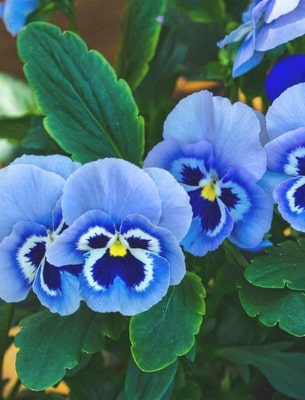
‘Adonis’ (‘Adonis’) - with a pale blue flower and "eye"
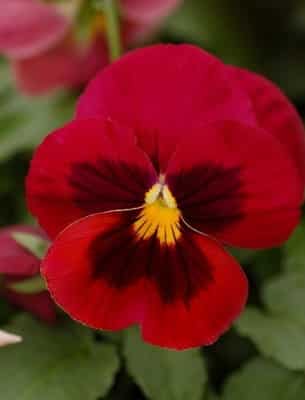
‘Cardinal’ (‘Cardinal’) - with a darker "eye"
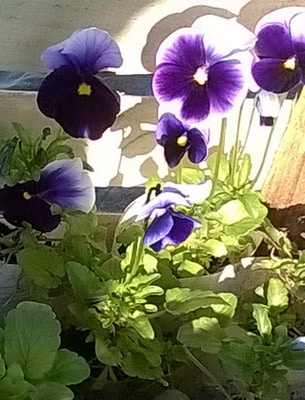
‘Lord Beaconsfield’ - one of the best in the group, has blue-purple lower petals and a white sail
Nowadays, an improved version of this variety with a larger flower has been created:
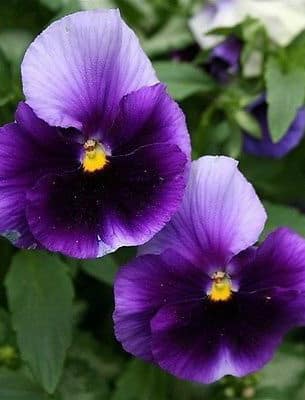
‘Super Beaconsfield’
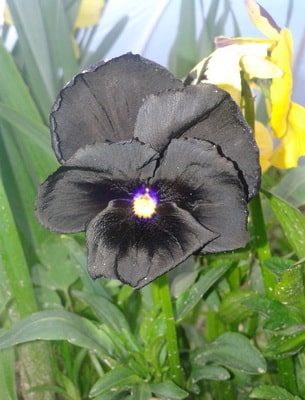
‘Mohrenkonig’ (‘Mohrenkonig’) - with a jet-black flower
Reproduction
The violet reproduces in two ways.
Seeds are most commonly used. In fact, such reproduction presents a number of technological difficulties, but in this case the plant turns out to be strong and full-fledged, it is less sick. During the growth process, you should monitor how the plant blooms and produces seeds.
Saintpaulias can reproduce using leaf cuttings, as well as leaf fragments and daughter rosettes. Cuttings with leaves are most often used. At the same time, the leaf should be complete and healthy, if it is withered, with signs of yellowness, then nothing will work. Usually the size of the cutting does not exceed three centimeters. After germinating the roots, the plant is planted in the ground to a depth of no more than 2.2 cm.
As far as sports are concerned, this is a different variety from the traditional description. Sports differ in leaves and flowers themselves. Usually, fantasy varieties are subjected to sporting. A guaranteed identical color scheme can only be inherited from a stepson. “Sport” translates as “spoil”, if the flower “spoiled”, it means that it did not bloom in accordance with its variety. There are many reasons for the emergence of sports - from abandonment to an unsuitable climate.


